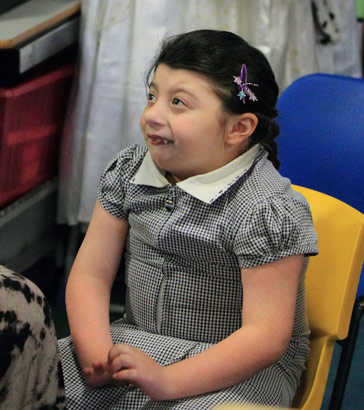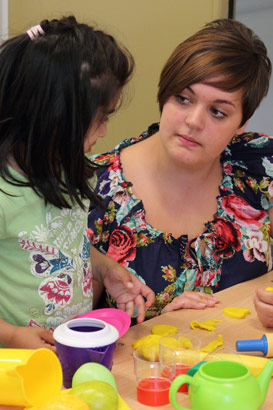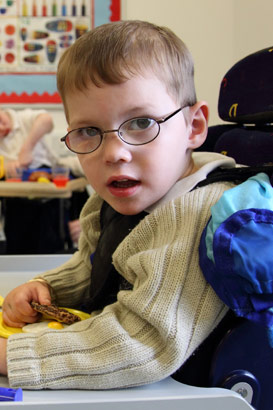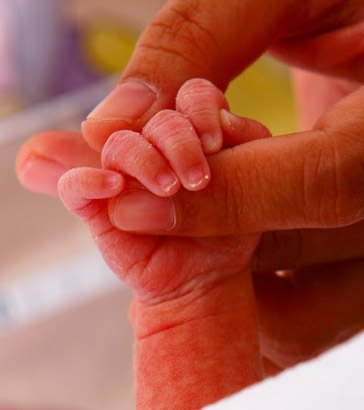child development

Here we introduce some 'starters' for key debates in the area of child
development. Explore at least one of the issues in depth.
For the issues you select, identify and read seven key texts (eg articles,
book chapters, books, etc.) relating to the topic in question. Create an
information sheet for colleagues on the topic. Under the topic heading,
first write an introductory paragraph explaining how the issue is important
for your setting. Then, using the text references as headings, summarise
the important messages from each. Make the sheet available through the intranet
or school library.
A corollary to this principle [of the child as an active learner] is
that there are certain periods during early development when experiences
have a more significant effect than others. These periods, called sensitive
or critical periods, are thought of as windows of opportunity during which
certain types of experience have a foundational effect upon the development
of skills
or competencies.
Fox and Rutter, 2010
Consider 'critical periods' and 'sensitive periods'.
What implications
does this have for the learning of children with SLD/PMLD/CLDD?

Data from [twin] studies provided estimates of heritability of specific
human personality traits or cognitive processes and, at the same time,
attempted to model the effects of shared and non-shared experience on
the developing child. This work has been useful in maintaining a voice
in the debate
as to whether development was more influenced by 'nature'
versus nurture... however... this...may no longer be valid.
Fox and Rutter, 2010
Consider how genes and environment interact.
Comment on the nature/nurture
debate in relation to your findings.

Concepts of development have historically favored
linear progressions that oversimplify and tend to homogenize development...
In contrast to these linear models, we
propose that a person develops along a web of multiple strands and that
different people develop along different pathways or webs.
Ayoub and Fischer,
2006
Consider the different models of developmental progression.

Neuroconstructivism strongly emphasizes the interrelation between brain development and cognitive development. We see constructivist
development as a progressive increase in the complexity of representations with the consequence that new competences can develop
based on earlier simpler ones. This increase in representational complexity is realised in the brain by a progressive elaboration
of cortical structures.
Mareschal et al, 2007
Consider neuroconstructivism and the implications for our understanding of disability.
According to Duchan... proponents of the impairment
view 'presume that the communication problem is in the client and that
it can be remedied by providing the client with missing knowledge or processing
skills'. Thus, following the impairment-based model, children's speech
is assessed according to standardized assessment tools. In the social
model, 'therapy plans centre around selected life goals and what needs
to be done to achieve them'.
McLeod and
Beile, 2004
Consider how developmental and functional assessment in a specific area
contribute to a holistic programme for children with
SLD/PMLD/CLDD.
The principle of age-appropriateness is commonly assumed to mean activities
and approaches commensurate with an individual's chronological age. Dress,
furnishing, object selection, and the style of interactions, are all supposed
to be age-appropriate, according to many policies. However, when this
principle is applied to people with profound intellectual and multiple
disabilities... I argue that... the principle contributes to practices
that compromise individuals' health, well-being, quality of life, and
their human rights.
Forster, 2010
Consider key arguments for and against age appropriateness in relation to children with SLD/PMLD/CLDD.

A further area of disagreement concerns the question
of the significance of the earliest years of life and whether what happens
during this period influences the whole life course.
David et
al, 2003
Consider risk, the impact of adversity, and resilience in the developing child.

Ayoub, C.C. and Fischer, K.W. (2006) Developmental pathways and intersections
among domains of development. In: K. McCartney and D. Phillips (eds) Handbook
of Early Child Development. Oxford: Blackwell.
Elsabbagh, M. and Johnson, M.H. (2009) Getting answers from babies about autism, Trends in Cognitive Sciences, 14 (2), 81-87.
Fox, N.A. and Rutter, M. (2010) Introduction to the special section on the effects of early experience on Development, Child Development, 81 (1), 23-27.
Forster, S. (2010) Opinions & Perspectives: Age-appropriateness: enabler or barrier? Journal of Intellectual and Developmental Disability,
June 2010; 35 (2), 129-131.

Mareschal, D., Johnson, M.H., Sirois, S., Spratling, M.W., Thomas, M.S.C.
and Westermann, G. (2007) Neuroconstructivism: How the brain constructs
cognition (vol. 1). Oxford: Oxford University Press.
McLeod, S. and Bleile, K. (2004) The ICF: a framework for setting goals
for children with speech impairment, Child Language Teaching and Therapy,
20 (3), 199-219.
Perry, B.D. (2002) Childhood experience and the expression of genetic potential:
what childhood neglect tells us about nature and nurture, Brain and Mind,
3, 79-100.
Westermann, G., Thomas, M.S.C. and Karmiloff-Smith, A. (2010) Neuroconstructivism.
In: U. Goswami (ed.) The Handbook of Cognitive Development (2nd edn).
Oxford: Blackwell.
Wilczenski, F.L., Bontrager, T. and Ferraro, B. (2002) Measuring functional
independence of students with severe disabilities: issues and methods, Assessment
for Effective Intervention, 28 (1), 31-38.